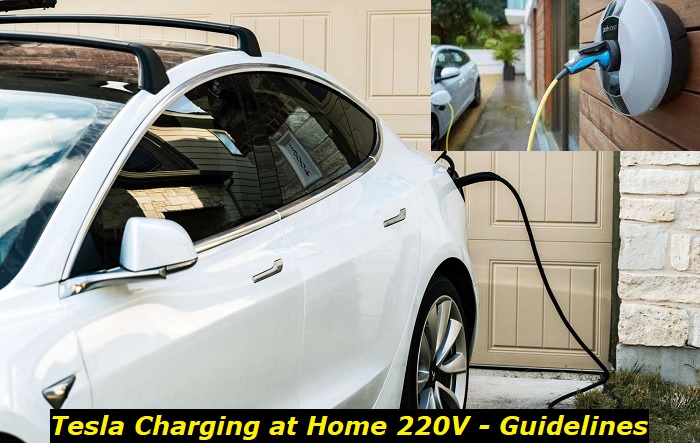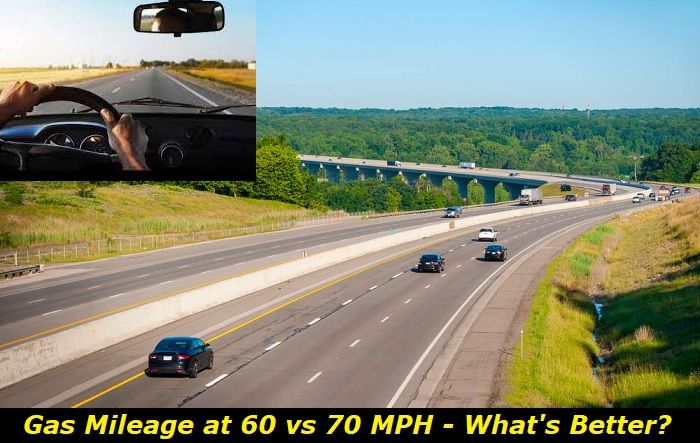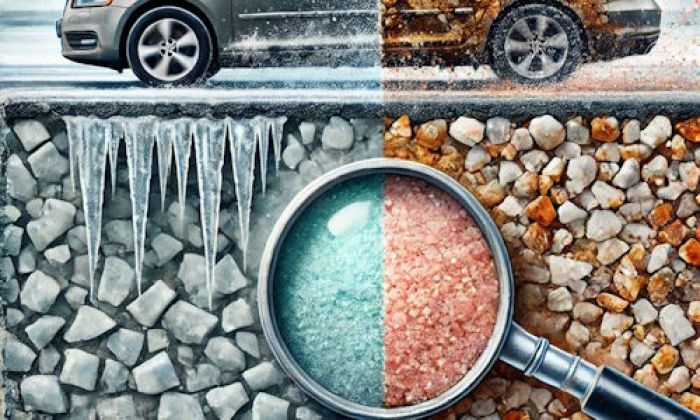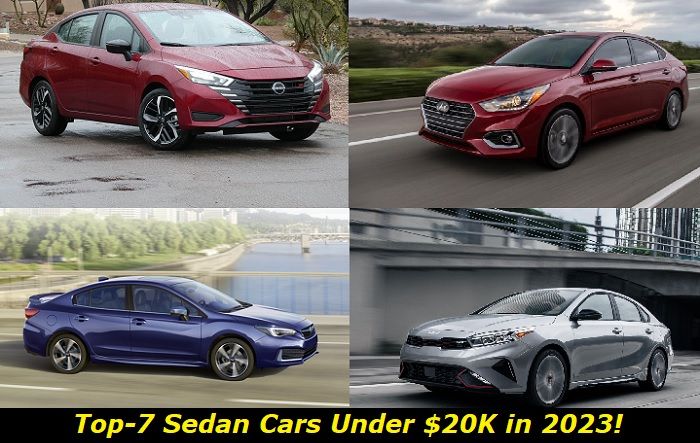If you have a new Tesla, you may wonder if you can safely charge it at home from the grid without any serious modifications and new equipment. We are talking about 220V grids that are common in Europe but 110V grids are quite the same in terms of charging electric cars, so all the information will also be applicable for American Tesla drivers.
Today, we are going to tell you about some tricks and concerns of charging your Tesla at home with a 220V socket and without any special equipment. We'll also show you some ways how you can make the charging process faster and more efficient. Also, we'll talk about safety concerns that a lot of Tesla owners have after some reports.

Also, almost everything we'll say today may be applied to other electric vehicles. Manufacturers use a lot of industry standards and lots of important units and modules work completely in the same way in all EVs.
Let's get started!
How to charge your Tesla at home?
So, if you want to charge your electric car from a home socket, you can really do that without any special equipment. Every new Tesla comes with chargers that suit different types of sockets and grids. You will have the equipment that is able to charge your Tesla right from the home socket.
But of course, you will need to know about some limitations this method has. We don't think that charging your new EV from a random home socket is the best idea.
First of all, you need to know how to charge the Tesla from a home socket. Here are some guidelines:
- first, locate the charging port in your Tesla and open the cover;
- after that, find your charging cable that should be just plugged into the home socket;
- first, insert the charging adaptor into the vehicle's port;
- after that, insert the other end of the adaptor into your home socket;
- check whether the charging process has successfully started;
- make sure nothing else is working in the same electricity line;
- from time to time, check whether the charging is going normally;
- when the charging is almost completed, take the adaptor off the vehicle and then off the socket;
- close the cover on the charging port on your Tesla;
- make sure you put the adaptor in the proper place in order to find it easily the next time you need to charge.
Unfortunately, you will not get a lot of miles in your Tesla if you are charging it this way. Let's see what concerns there are in the process of charging the Tesla from a home socket.
Why is a home charging not really efficient?
People say that when you are charging your Tesla EV from a home socket, you can get approximately 2 to 4 miles or 3 to 6 kilometers per hour of charging. This is nothing for a lot of us! The vehicle will have to be charged the whole night to only give you the chance to drive to your work.
The efficiency of home charging is one of the reasons why so many people prefer fast charging stations. But let's see what the efficiency depends on:
- your home grid is pretty limited in terms of kW it can give to one socket for a long time;
- this depends on the type of cable in your house wiring, the type of socket, your safety equipment in the home electricity system;
- so, this may take much longer than you think to charge your Tesla battery completely;
- also, new Tesla cars have quite large batteries, so charging them at home may take too much time;
- also, the adaptor is limited in terms of kW it can take to avoid overheating and fire issues.
In most countries with 220V grids, one home socket can give about 1kW of charge per hour. This means that an average 60-kWh battery pack will be fully charged for almost three days which is ridiculous. What about a 100-kWh pack in some Teslas?
So, home charging will certainly not be the best way of charging your vehicle. At least, if you are using a simple home socket. But what can you do to make this process faster and more efficient?
Charging at home after some modifications
There are several things you can do to make your charging at home much faster and more efficient.
Here, we'll tell you about some of them:
- Wall Connector from Tesla is a product that is mounted on the wall outside your house or garage and gives you simple access to the charger. Also, the Wall Connector allows you to charge the battery for about 11kW an hour which is 10 times faster than with a simple socket. But the efficiency depends on the home grid type anyway.
- Special outlets. You may not want to pay for the Wall Connector and you may obviously make your special socket for charging your Tesla. For this, contact the company that supplies your house with electricity and make arrangements to install an additional outlet. The outlet should come with a 50 amp circuit breaker and it will give you about 37 km per hour of charge.
- More powerful Tesla charger in your garage. If money is not your concern, you may buy and install a powerful Tesla charger and basically make a fast-charging station at your home. This is going to cost you a lot for the equipment and even more for the official installation. But you will be able to charge your vehicle in one or two hours.
- Aftermarket charging stations. You may also choose a charging station for EVs that is not made or supported by Tesla. Of course, this all depends on your budget, but they usually come at a lower price than Tesla products. Before you shop for some of them, make sure to consult with a specialist who will help you install and register this equipment.
All countries have their own rules in terms of what's allowed and disallowed for home chargers, so it's important to check the rules and speak to professionals before you buy any special equipment. We believe charging Tesla with the help of additional equipment in your house is the only good choice. Because using your home socket is not actually efficient and it's going to be really long. We recommend Tesla Wall Connectors but you may go for cheaper options.
Are there risks when charging a Tesla with a home socket?
Risks are always there with electric cars. But we don't like speculating on these topics. When you are driving a gasoline-powered car, you also have risks of fires, explosions, short circuits, and other bad events. There are several reports from all over the world that while charging at home or at fast chargers Tesla cars caught fire. Given millions of Tesla cars are out there, we believe these figures are negligible.
But we should warn you about the risks with your home grid which are more obvious than your Tesla catching fire. If the home grid is wired by old and shabby wires, the wire will heat up when charging your EV. This means there is a big risk of fire in your house or problems with electrical equipment.
If you are going to charge a Tesla using your home socket, you should be sure that the home electricity grid is OK and the wiring is not going to overheat. It's always better to build a separate grid for your electric car than to use the same grid that you use for your home appliances.
Alternative ways of charging your Tesla for free
Well, we understand that home charging is not only convenient because your vehicle is always around you and you can drive it any time. It's also cheaper than using all those fast chargers that cost you pretty much the same as gasoline would cost for your ICE-driven car.
So, we've decided to find out how you can charge your Tesla for free or at least for the same money as you would charge it at home.
And here are some of our ideas:
- Check if your work has EV chargers. Many companies offer EV chargers as one of the advantages for their employees. They may charge you for free or give you a special card that will count the kilowatts you take from the grid charging you the same price as you would pay at home.
- Check public EV chargers around you. There are still many incentives that governments introduce to motivate people to buy cars. And free public chargers are one of them. Find the charger you may use and just charge your Tesla for free.
- Check if you have free Supercharging in the list of options you get with your car. Sometimes, Tesla may give you one or two years of free Supercharging and you should use it.
- Install solar panels and power storage. This is going to cost you a lot for installations but eventually, you will be able to charge your Tesla for free for years to go. In some countries with high electricity prices, this makes sense.
So, here you have a couple of ideas of how you can charge your Tesla for free or pay just a little money. We hope now you know everything about charging your Tesla at home. But if any questions are left in your head, feel free to write them in the comments below!
About the authors
The CarAraC research team is composed of seasoned auto mechanics and automotive industry professionals, including individuals with advanced degrees and certifications in their field. Our team members boast prestigious credentials, reflecting their extensive knowledge and skills. These qualifications include: IMI: Institute of the Motor Industry, ASE-Certified Master Automobile Technicians; Coventry University, Graduate of MA in Automotive Journalism; Politecnico di Torino, Italy, MS Automotive Engineering; Ss. Cyril and Methodius University in Skopje, Mechanical University in Skopje; TOC Automotive College; DHA Suffa University, Department of Mechanical Engineering






Add comment